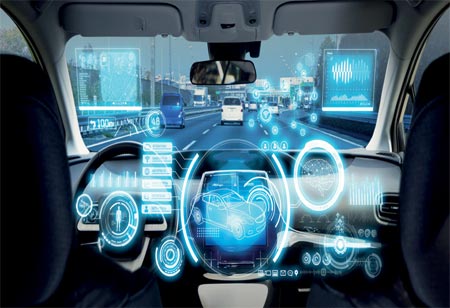
Most of us are unaware of what Telematics is. It’s not just a GPS tracking system, but a revolutionary technology for businesses that deal with fleets of vehicles and heavy machinery. With the help of telematics, you can not only track the data movement but also build a huge data mine that will help you run your business more efficiently. Telematics plays a key role in improving the ground layout of your worksite.
It keeps individual track of every single vehicle that’s in use and maintains an organized history chart of its movement with refined monitoring systems, GPS, and interface with the collection of data. It is used commercially as well as noncommercially in fleet management and has changed the face of many industries including transport, site excavation, and construction.
Telematics provides a range of services; from fuel monitoring to fleet management and public transportation system to temperature monitoring systems. It even helps in pet tracking and provides safety in every possible way. Talking specifically in terms of telematics in fleet management, it has brought some major benefits to the tracking industry. It has widely improved customer services and products with the help of GPS tracking which includes various steps - from trip reporting to dispatching and routing tools.
It ensures complete safety with in-vehicle driver coaching consisting of risk and driver behaviour reporting, accident and reconstruction notifications, and the provision to locate the stolen vehicle. It can save precious time in the hour of need by providing accurate results to people in distress. It has boosted customer service standards, its efficiency, and enhanced the overall tracking services.
How Does It Work?
The data is collected via the Global Positioning System (GPS) technology which works on trilateration which is often confused with ‘triangulation’. It is a process of determining the location of a point by measuring only angles to it from known points at either end of a fixed baseline, rather than measuring distances to the point directly as in trilateration, installed sensors, and vehicle engine data.
Telematics enables us to keep a close eye on the speed, location, and movement of the vehicles. The entire system is connected via a wireless network that is installed in an onboard modem. The data is collected in a secured centralized server where it is interpreted and made available for the end-user or the fleet management on the website or mobile application.
The captured data includes location, rapid acceleration, harsh braking, fuel consumption, vehicle performance, etc.
Accuracy Level Achieved By Data
• Hoisted Efficiency
This is made possible by forming a complete communication circle between the management, drivers, and operators. By using geodata, GPS plots the route that is most suitable to commute, considering better route conditions, less fuel consumption, and faster commute. It hooks up the system with real-time traffic reports, that minimizes the slowdowns. It even informs about the condition of the vehicle - whether it’s in motion, off or idle. This pins down the driver’s efficiency and ensures safe driving practices by providing exact information about speeding or reckless driving. It helps to better the driver’s performance as well.
How Telematics Helps In Detecting Fuel Consumption And Fuel Theft?
One of the major expense the fleet owner has is the cost of the fuel. Fuel and labour together consume about 50% of the expenditure. The tracking system in the vehicle receives data constantly. This helps in keeping track of the fuel consumption by the vehicle and any fuel theft. The fuel sensors are used to keep a check on injected fuel into the engine whereas they evaluate the fuel level in the tank. If there are any changes reflected in the fuel level in the tank by the owner of the vehicle will be immediately alarmed about the unauthorised fuel draining. This largely reduces the fuel theft that was quite common before the advancement of this technology.
Exponential growth is expected for telematics owing to the increasing awareness about it in the market
• Effective Communication
Telematics plays a key role in bettering customer relations by providing the companies specific details regarding what they can expect with regards to important supplies or materials. Hence, this system enables better planning. It also makes the job of dispatch easy as it helps you reroute the ongoing consignment and saves time which would be spent in doing back and forth from the garage.
• Cost-Effective Maintenance
Sometimes, major issues with a machine are missed from being detected through regular inspections. Telematics provides you with precise data about the maintenance of your machine and will make you aware of its productivity, depreciation, and wear and tear. It will help you determine when to discontinue using a particular piece of machinery and switch to a new one. It also enables you to strike a contrast between its previous performance and the current state. Fleet telematics is essential in saving fleet time, complete optimization of fuel, and predictive vehicle maintenance with remote diagnostics.
Difference Between Telematics And GPS Tracking
GPS tracking is limited in its features and shows only the positioning and location of your vehicle. However, telematics is quite vast in its scope. It provides a comprehensive analysis to the fleet managers, compiling vehicle location, speed, irregular incidents like brakes, acceleration, gate opening, driver and vehicle’s efficiency, panic alerts, dashboard camp, or on-board camera footage, inspection reports, etc.
Future Of Telematics
Exponential growth is expected for telematics owing to the increasing awareness about it in the market. It’s a mobile technology that can immensely help in boosting productivity, controlling costs, maintaining better data records, and improving accountability. With this advanced technology, one can get an exact idea about the fleet usage and can help in a sharp reduction in operational costs in logistics.
We use cookies to ensure you get the best experience on our website. Read more...